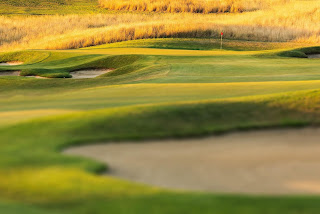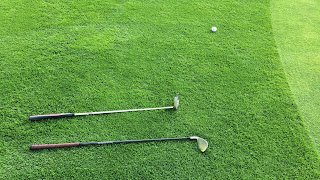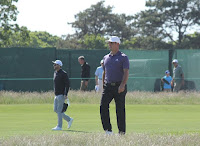It's easy to discuss what you would do to recover from a bad round of golf but how do you follow up after your BEST round?
When you shoot a really low score in golf, do you tell anyone? Sure you do...you probably shout
"I scored a 36" from the rooftops to whoever will listen...even if they don't play golf. Subsequently, when the score is not so great, it may still go into your GHIN but without any fanfare.
So, when you shoot your best round of golf EVER, is it followed up by an equally amazing performance?
How well do you recover?
It isn't easy but
Golf for Beginners has a few tips to help you become
more consistent from round to round.
Although I have several 9-hole rounds in the '30s, my average 9-hole/18-hole round is in the '40s and I am regular '80s golfer. That being said, future rounds have fallen quite short of my expectations...even my husband has to give me the
"what's wrong with you" stare when we play golf, making me even more self-conscious of my shortcomings.
I am getting rather good at making excuses, and the weather, being hot and extremely muggy, is actually
helping my defense, even though I should be able to shake off the heat and concentrate on one shot at a time.
SportsPsychologyGolf says that, in order to shoot a low round,
"it takes a hot putter, a short game that is more precise than usual, plus a modicum of luck. But it also takes smart course management, complete focus on the task at hand, and total self-composure."
Whew, sounds like a lot of things have to fall into place in order to shoot a low score...right?
How often are all of the above ingredients put together in one round, artfully blended together on the course into one "professional golfer" package"?
For the vast majority of golfers, whether beginners or strong amateurs,
Golf for Beginners suggests the following tips for a
quick comeback in golf:
1. Have a short memory: Where it's good to fist pump after draining a long putt, it's just as bad to keep with you that snowman you made on the previous hole.
2. Overcome Obstacles: Pressure affects everyone differently but, according to
Dr. Bob Rotella, "Having control of your mind and using it properly can separate you from the competition." Instead of thinking that you will ever get the perfect score, consider that "the essence of golf is reacting well to inevitable mistakes and misfortunes." Once you understand that the challenge and fun are in overcoming obstacles on the course, you will have a much happier time and perform better.
3.
GASP: Not hitting the ball well? Sometimes, you just need to go back to the basics - Grip, Alignment, Stance, and Posture. Make sure you start, and finish, in balance!
We hope that your next round of golf is your best one ever and that you follow up with equally great rounds, one shot at a time.
Follow
Golf for Beginners on Twitter and feel free to comment in the section below.




















